I Got Rid of All The Grass In My Front Yard And Couldn’t Be Happier
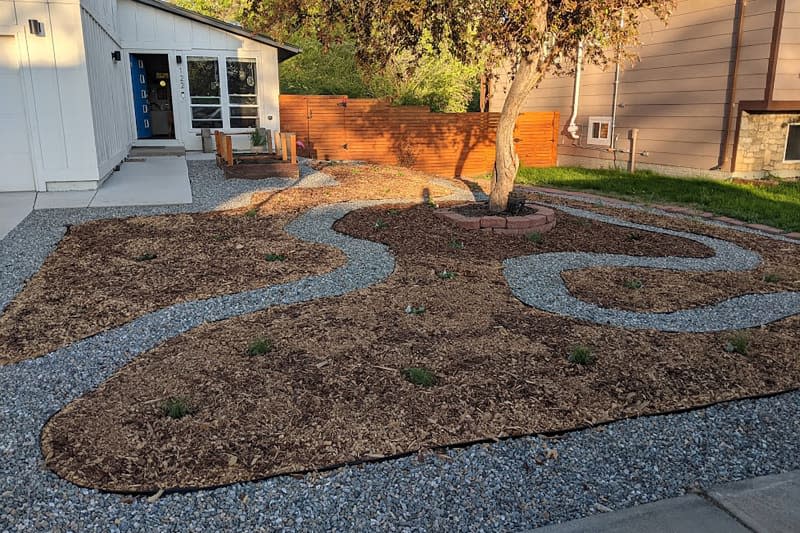
When I bought my house, I loved everything about the interior, from the open floor plan to the large windows that let in lots of natural light. But the front lawn? That was a different story. It was a small, dusty patch of rock-hard soil that had largely been overtaken by weeds, with a scraggly crab apple tree in the middle. Nevertheless, the first summer I moved in, I diligently mowed it once a week. Then, about a year later, I decided enough was enough. I wanted to get rid of the lawn (if you can even call it that) and replace it with mulch, small rocks and drought-tolerant plants, a practice known as xeriscaping. One of the main goals of xeriscaping is to create a yard that requires a minimal use of water.
My savings account was still recovering from making the down payment on my house, and hiring professional landscapers is expensive, so I decided to do it all myself. Now it’s been about four years since I got rid of my front lawn, and I couldn’t be happier. Here’s why I decided to nix the grass—and how I pulled off the project.
Why I Kissed My Grass Goodbye
Aside from the fact that the front yard was a total mess, I also had a few other reasons for wanting to get rid of the lawn. For starters, water is becoming increasingly scarce in Colorado and most of the Western United States. As a journalist I’d reported on drought in the West, and I knew that as much as 70% of a homeowner’s water consumption in the summer goes to the lawn — a stat that still blows my mind.
I know some homeowners feel strongly about having a perfectly manicured grass lawn, but that just felt silly to me. I agree there are certain scenarios where having a lawn makes sense, like if you have kids who love to play outdoors. But having one just to keep up with the Joneses? Count me out.
Around the same time I bought my house, I’d also heard about a local nonprofit called Resource Central that was encouraging homeowners to get rid of their lawns. (Some communities in Colorado will even pay homeowners to remove their lawns.)
To make the process even easier, they offer curated collections of drought-tolerant plants through a program called “Garden in a Box.” The boxes are designed specifically for Colorado’s climate by local landscape architects, and they include detailed descriptions of each plant and an easy-to-follow “plant by number” layout. I began following Resource Central on Instagram, and seeing the photos of other people’s grass-free yards with colorful blooms gave me the confidence to proceed.
Finally, because I travel a lot for work, I wanted to make my home as low maintenance as possible. No yard meant no more mowing and no more weed-wacking.
How to Get Rid of the Grass in Your Yard
From the get-go, I knew a project of this magnitude would be challenging. But as a first-time homeowner, I was happy to put in a little sweat equity to make the property feel more like my own.
After copious amounts of online research, my first step was measuring the yard, then sketching various xeriscaping designs on paper. In the end, I settled on covering most of the yard with mulch, with curving rock pathways as accents. I also set aside part of the yard for two square raised garden beds. Around the same time, I ordered several “Garden in a Box” kits so I’d have more than 50 starter plants to work with once the yard was officially gone.
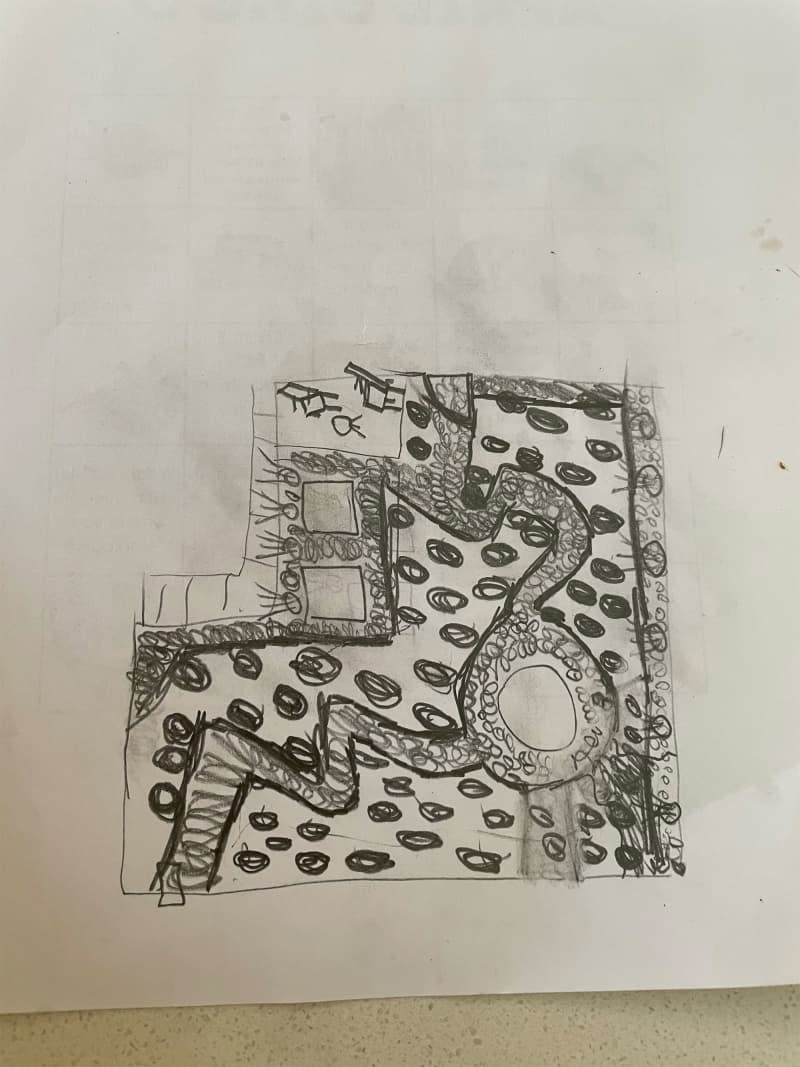
Next I visited a bulk landscape materials supplier to look at all the different types of mulch and small rocks available. Using my yard measurements, I calculated how much I’d need, then placed an order.
With the materials all squared away, I rented a sod cutter machine and got to work removing the grass. The machine has a blade that cuts down into the soil, then slices horizontally to remove the grass and the roots in strips. Afterward, I covered the yard with flattened cardboard, then topped it all with landscape fabric.
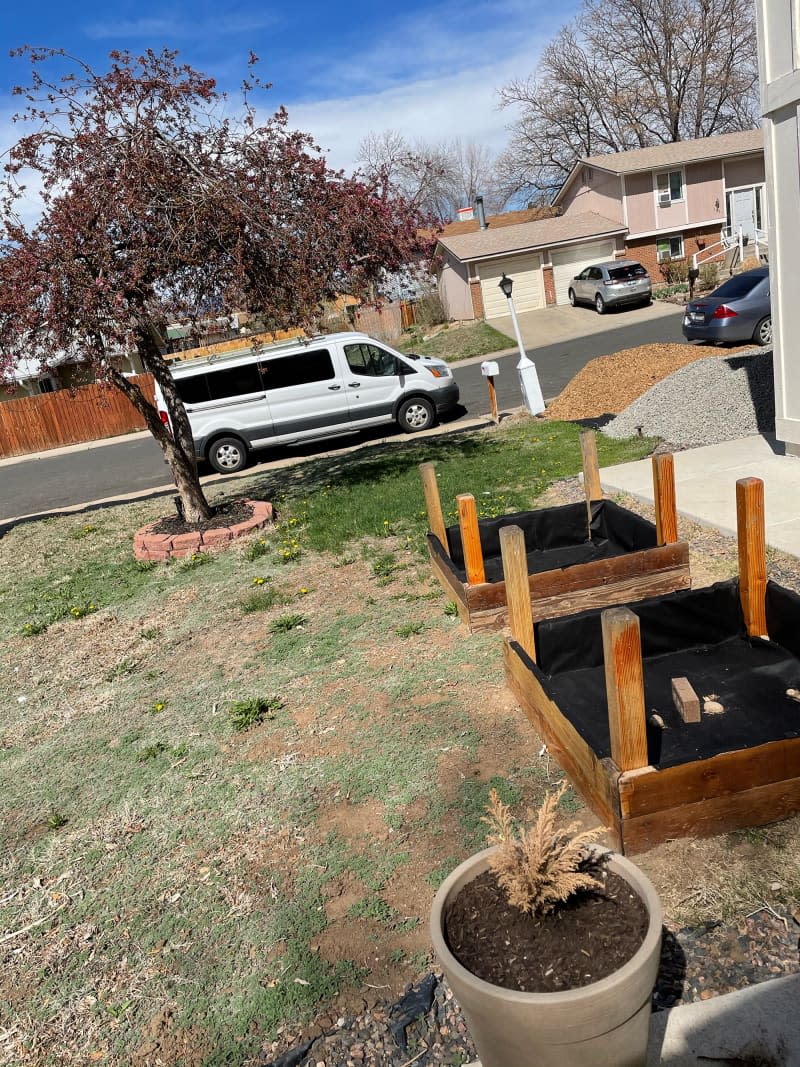
A few weeks later, a dump truck unloaded huge piles of small rocks and mulch onto my driveway. With help from friends and neighbors, I began to move the mulch and rock into place to match my sketch, one shovelful at a time. It was exhausting, but also satisfying to see my plans slowly take shape.
Finally, it was time to plant. I loosely followed the design plans that came with each “Garden in a Box,” but also used each individual plant’s light preferences as a guide for where to put them in the yard. For each one, I pushed aside the mulch, cut through the landscape fabric and cardboard, dug a small hole and carefully planted them in the dirt.
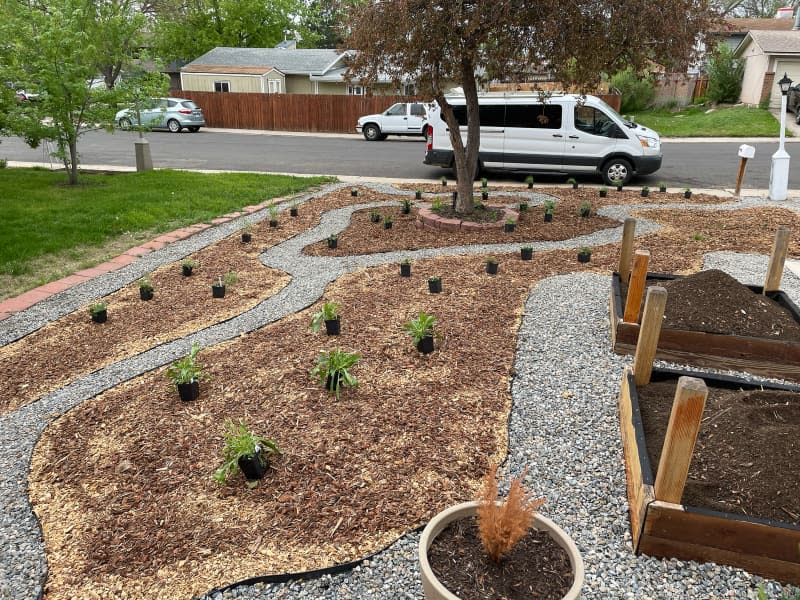
Xeriscaping Can Include Flowers
Even drought-tolerant plants need to be watered periodically for the first few months to help them get established, which I did that first summer with a garden hose. But now the only maintenance they require is periodic pruning in the fall. The only water they get comes from rain and snow.
I’ve slowly been adding more and more drought-tolerant plants each year, including perennial bulbs like daffodils, irises, and crocuses. Now I have staggered flowers blooming from early spring through late fall. In the summer my front yard is full of bees, and there’s usually at least one hummingbird hanging around.
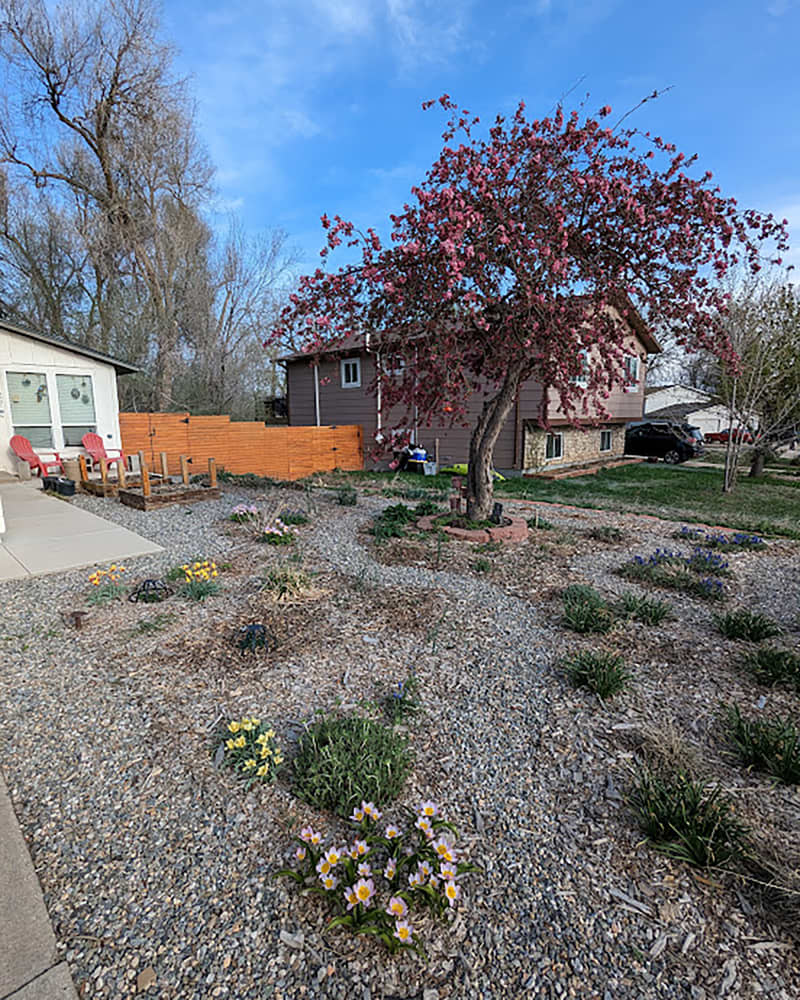
Instead of being an eyesore, my front yard is now my favorite part of the property—and I’ve seen neighbors out walking their dogs do an appreciative double take when everything is in full bloom. I hope it inspires other homeowners in my neighborhood to think outside the box and realize they don’t have to have a grass lawn just because (nearly) everyone else does.
Is Xeriscaping Good or Bad for Resale Value?
I plan to stay in my house for a long time, but still the question remains: Was this a good move for resale value?
The grass lawn versus xeriscaping debate mainly boils down to location, says Cara Ameer, a real estate agent with Coldwell Banker who splits her time between California and Florida. Since I live in Colorado, my xeriscaped front yard likely won’t hurt my home’s resale value—and may even help boost it. But it may not be the right choice for homeowners in other parts of the country.
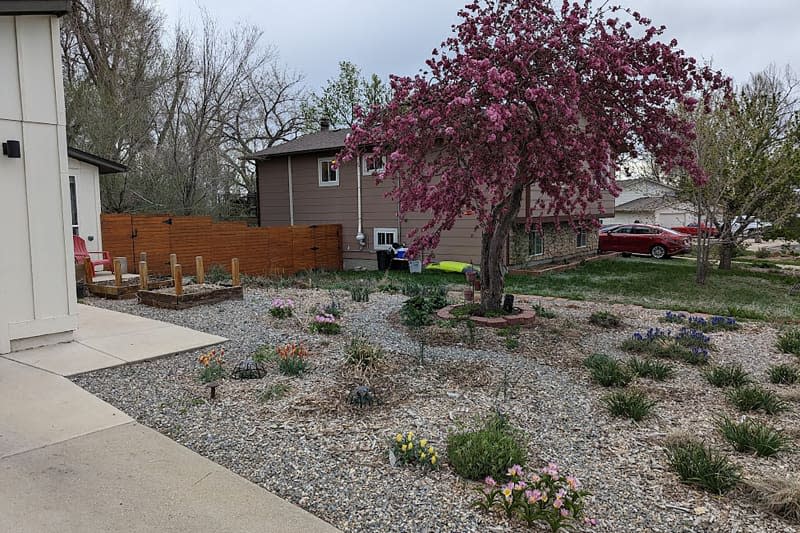
“In desert climates, drought-prone areas, and places where there are watering restrictions, like California, Arizona, and Las Vegas, drought-tolerant materials can be considered a good thing and desirable from a resale perspective,” Ameer says. “In other areas where lawns are more commonplace, such as the Northeast, the Southeast, and Florida, they may not go over so well.”
In her market in Northeast Florida, where landscaping with trees, bushes, and grass is common, Ameer has watched homes sit on the market because buyers didn’t like their xeriscaping. Still, she says many buyers are in favor of low-maintenance options, whether that’s a blend of hardscaping and grass or a fully xeric yard.

“Today’s buyers, for the most part, don’t want to be saddled with doing a lot of yardwork—times have changed and with people’s busy lifestyles, that is something that they do think about,” she says. “Empty nesters and retirees are particularly keen on this, as well as busy families who are shuttling kids to various activities on the weekends.” Agreed.

